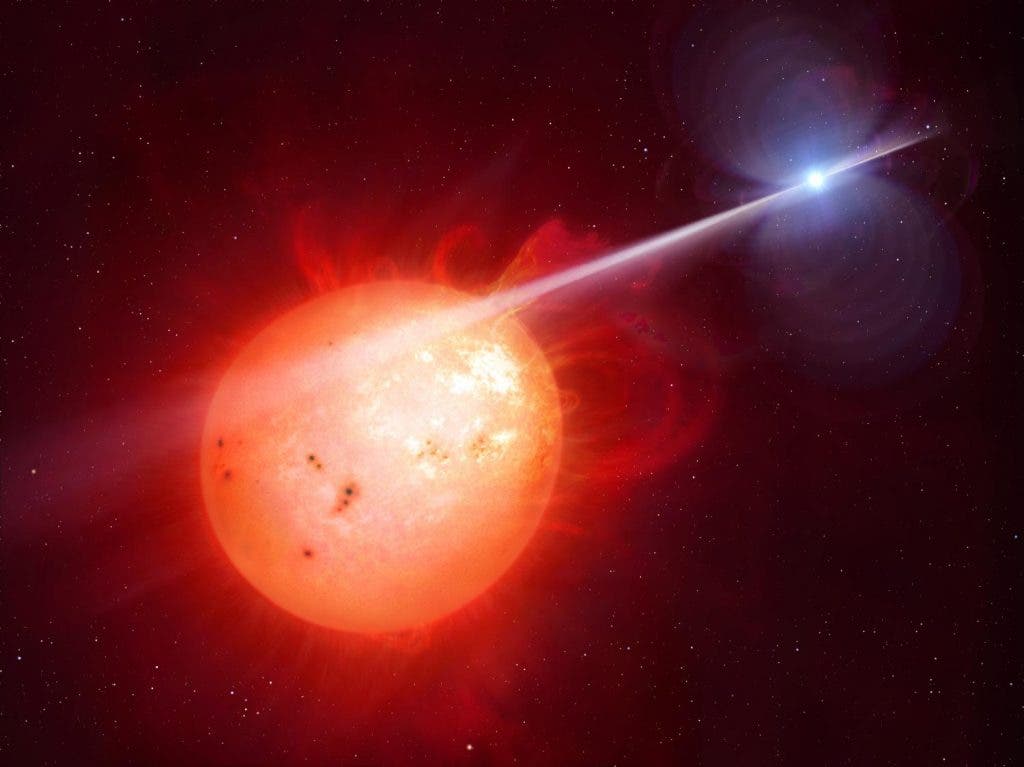Scientists from the University of Warwick have discovered a new type of binary star – a pulsing white dwarf. This rapidly-spinning, burnt-out star sweeps beams of particles and radiation over its companion red dwarf, a behavior that has never been observed in this type of star.

Illustration of the pulsing white dwarf lashing particles and radiation onto its companion red dwarf. Credit: University of Warwick
The unique star was initially discovered by a group of amateur astronomers back in May of 2015. After the initial discovery, the University of Warwick spearheaded a combined effort between amateur and professional astronomers to get a better look at the star system, which is named AR Scorpii or AR Sco for short.
“AR Sco was discovered over 40 years ago, but its true nature was unsuspected until we observed it last May with a high-speed astronomical camera called ULTRACAM on the William Herschel Telescope,” said Tom Marsh of the University of Warwick and lead author of the study. “We realized we were seeing something extraordinary within minutes of starting to observe it.”
The pulsing white dwarf is found in the constellation Scorpius approximately 380 light-years from Earth. It is 200,000 times more massive than the Earth and is in a 3.6-hour orbit with its cool red dwarf star companion, which is around one-third the mass of the Sun.
AR Sco creates beams of radiation and particles that lash its red dwarf star, causing the entire system to light up and fade away twice every two minutes. This unique process accelerates electrons in the red dwarf’s atmosphere to close to the speed of light, which has never been observed in similar types of stars. The rapidly-spinning magnetic field of the white dwarf accelerates these electrons, although their exact location in the red dwarf’s atmosphere is still not known.
“We’ve known pulsing neutron stars for nearly fifty years, and some theories predicted white dwarfs could show similar behavior,” said Boris Gänsicke of the University of Warwick and co-author of the study. “It’s very exciting that we have discovered such a system, and it has been a fantastic example of amateur astronomers and academics working together.”
Journal Reference: A radio-pulsing white dwarf binary star. 27 July 2016. 10.1038/nature18620









